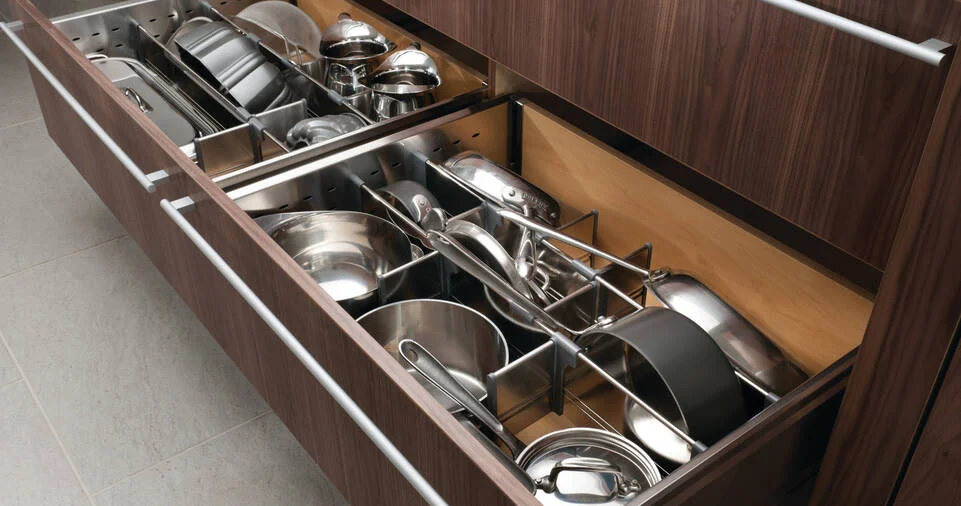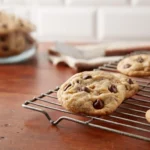A well-organized kitchen is essential for maximizing efficiency, reducing stress, and making cooking an enjoyable experience.
Whether you have a small kitchen or a spacious one, clutter and disorganization can make meal preparation frustrating and time-consuming.
A structured kitchen setup not only saves time but also improves functionality, making it easier to find ingredients, cookware, and utensils when needed.
Additionally, an efficiently organized kitchen promotes cleanliness, reduces food wastage, and allows for better meal planning.
With the right organization strategies, you can transform your kitchen into a space that is both visually appealing and practical.
An unorganized kitchen can lead to misplaced ingredients, difficulty in meal preparation, and wasted time searching for essential tools.
Imagine the convenience of knowing exactly where every item is stored, allowing you to focus on cooking rather than struggling to find items.
A well-planned kitchen setup also contributes to healthier meal choices since you can easily access fresh ingredients and cook more efficiently.
In this comprehensive guide, we’ll explore step-by-step methods to declutter, optimize storage, utilize vertical space, and implement smart kitchen organization techniques.
Whether you are an occasional cook or a home chef, these tips will help you streamline your cooking process and maintain a tidy, well-organized kitchen.
Let’s dive into the details and learn how to create a kitchen that is both functional and beautiful.
Step 1: Declutter and Remove Unnecessary Items
Why Decluttering is Essential
Before you begin organizing your kitchen, it’s important to declutter and eliminate unnecessary items.
Over time, kitchens tend to accumulate expired food, duplicate utensils, unused appliances, and other non-essential items.
This clutter takes up valuable space and makes it harder to find what you actually need.
Removing unneeded items creates more room for frequently used essentials, helping you maintain an organized and efficient workspace.
How to Declutter Effectively
Start by emptying out your cabinets, drawers, and pantry. Take inventory of everything and categorize items based on their frequency of use.
Ask yourself the following questions:
- When was the last time I used this item?
- Do I have multiple versions of the same tool or appliance?
- Is this item still in good condition and necessary?
- Does it serve a specific purpose in my cooking routine?
Once you’ve sorted through your kitchen essentials, donate or discard items that you no longer need.
Expired food should be thrown away, and duplicates should be either donated or stored in a less accessible area.
Consider setting up a donation box for kitchenware that is still in good condition but rarely used.
For those struggling with sentimental attachment to certain items, consider taking photos before letting them go.
This way, you can keep the memories without keeping the clutter. Additionally, making a habit of monthly decluttering will ensure that your kitchen stays organized in the long run.
Step 2: Group Similar Items Together

Categorizing Kitchen Essentials
After decluttering, organize your kitchen items into categories to ensure everything has a designated place.
Grouping similar items together makes it easier to locate what you need when cooking.
Here are some common categories:
- Baking Supplies – Flour, sugar, baking soda, measuring cups, whisks, rolling pins.
- Cooking Essentials – Pots, pans, spatulas, ladles, tongs, cutting boards.
- Spices and Condiments – Salt, pepper, herbs, sauces, cooking oils.
- Dinnerware and Glassware – Plates, bowls, cups, drinking glasses.
- Pantry Staples – Canned goods, pasta, rice, cereals, snacks.
- Small Appliances – Blender, toaster, food processor, coffee maker.
- Cleaning Supplies – Dish soap, sponges, disinfecting wipes, trash bags.
Storing Items Strategically
Keep frequently used items within easy reach and place less commonly used items in higher or lower cabinets.
Store heavier items, such as large pots and pans, in lower cabinets to avoid strain when retrieving them.
For frequently used spices and condiments, a turntable or spice rack can make access easier.
Consider implementing a color-coding or labeling system to further streamline item retrieval.
For instance, label spice containers with their names and expiration dates. Utilize dividers and baskets to separate different categories, reducing the chances of a cluttered storage space.
ALSO READ: How to Make Perfect Chocolate Chip Cookies Every Time
Step 3: Optimize Cabinet and Drawer Space
Maximizing Cabinet Storage
Cabinets are one of the most valuable storage spaces in any kitchen, but they can quickly become disorganized.
To make the most of your cabinet space:
- Use Stackable Shelves – Increase vertical storage space within cabinets by using stackable shelves.
- Install Hooks – Hang mugs, measuring cups, or utensils on hooks underneath shelves to maximize space.
- Use Clear Storage Bins – Keep smaller items grouped in clear bins so you can quickly identify their contents.
- Adjustable Shelving – Invest in adjustable shelves to customize cabinet space based on your needs.
Drawer Organization Tips
Drawers often become cluttered with miscellaneous kitchen tools.
To keep them organized:
- Use Drawer Dividers – Separate cutlery, cooking tools, and small gadgets to prevent mess.
- Store Similar Items Together – Assign specific drawers for cutlery, baking tools, and cooking utensils.
- Label Drawers – This helps maintain order and ensures that everything is returned to its designated place.
- Rolling Storage Carts – If you have limited drawer space, consider using a rolling storage cart for extra organization.
Step 4: Use Clear Containers for Dry Goods
Benefits of Using Clear Containers
Storing pantry staples in clear, airtight containers provides several advantages:
- Keeps food fresh for longer.
- Reduces the chances of pest infestations.
- Helps you easily see when supplies are running low.
- Creates a neat and organized pantry space.
Best Practices for Pantry Organization
When organizing your pantry, label each container with its contents and expiration date.
Arrange items by category, with frequently used ingredients placed at the front.
Consider using stackable containers to maximize space and maintain a clutter-free look.
Additionally, implement a “first in, first out” method to prevent food waste by using older items first.
ALSO READ: How to Make Homemade Bread with Simple Ingredients
Conclusion
An efficiently organized kitchen enhances functionality, saves time, and reduces stress during meal preparation.
By decluttering, categorizing items, optimizing storage, and maintaining a systematic approach, you can create a kitchen that works best for your needs.
Whether you’re a seasoned chef or a casual cook, implementing these organization techniques will make your cooking experience smoother and more enjoyable.
Start today and transform your kitchen into a well-structured and efficient space!
Maintaining an organized kitchen requires consistency. Set a monthly reminder to check for expired items, reorganize storage spaces, and ensure that every item is returned to its designated spot.
Involving family members in maintaining kitchen organization will also make the process more manageable.
With these practical steps, your kitchen will remain a functional and welcoming space for years to come!







